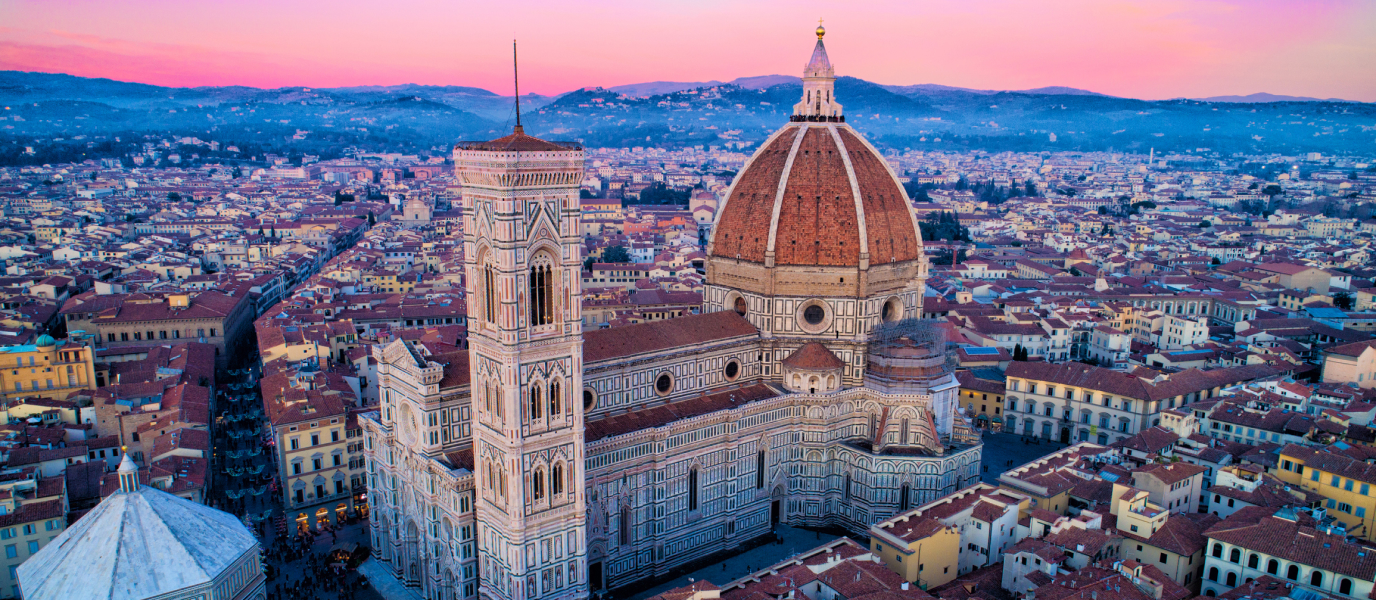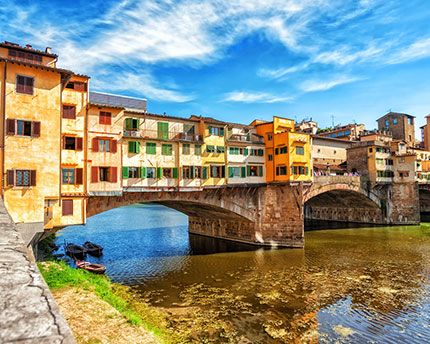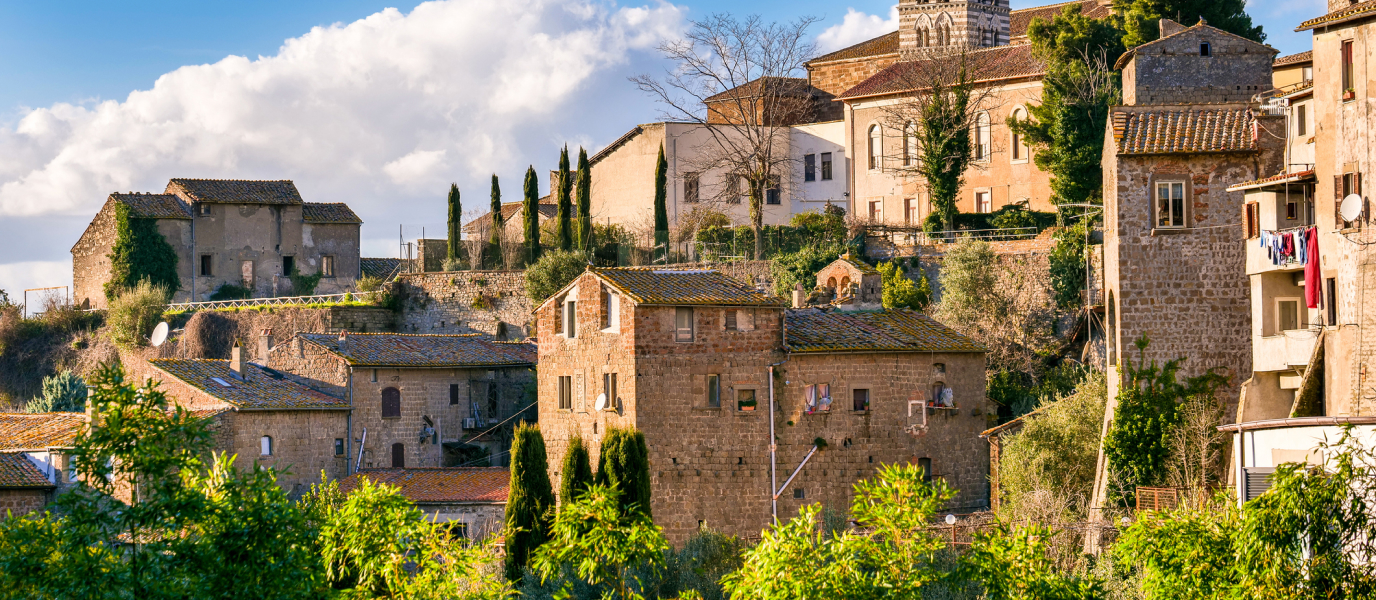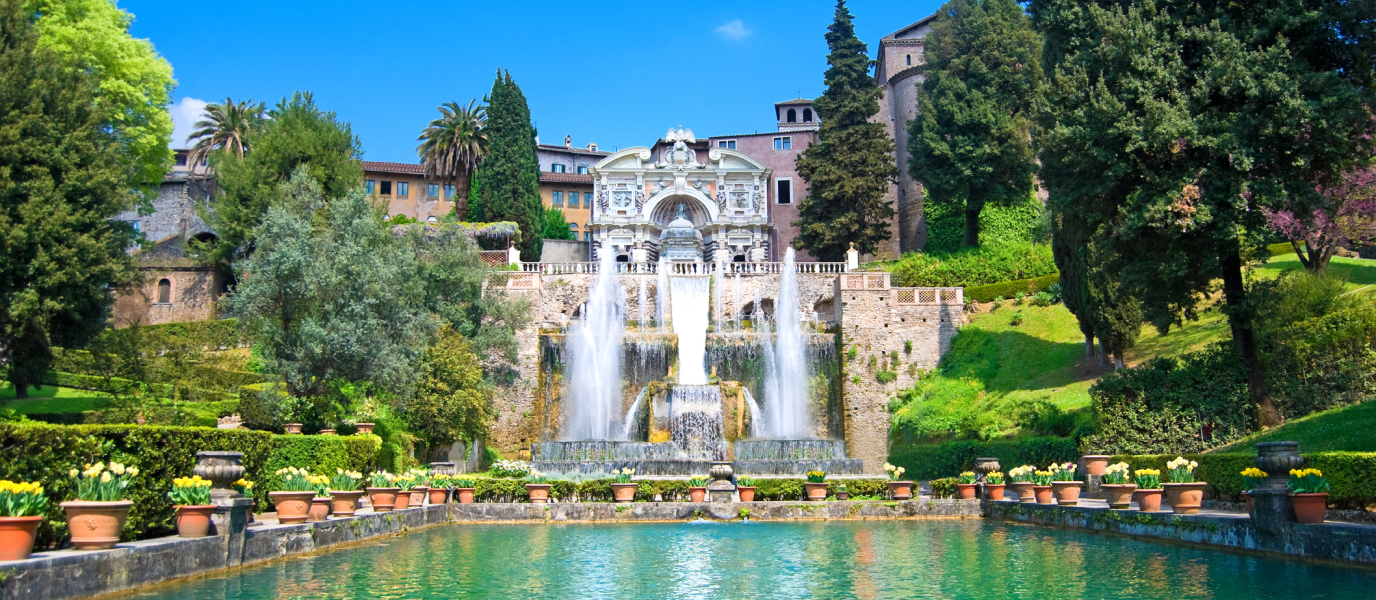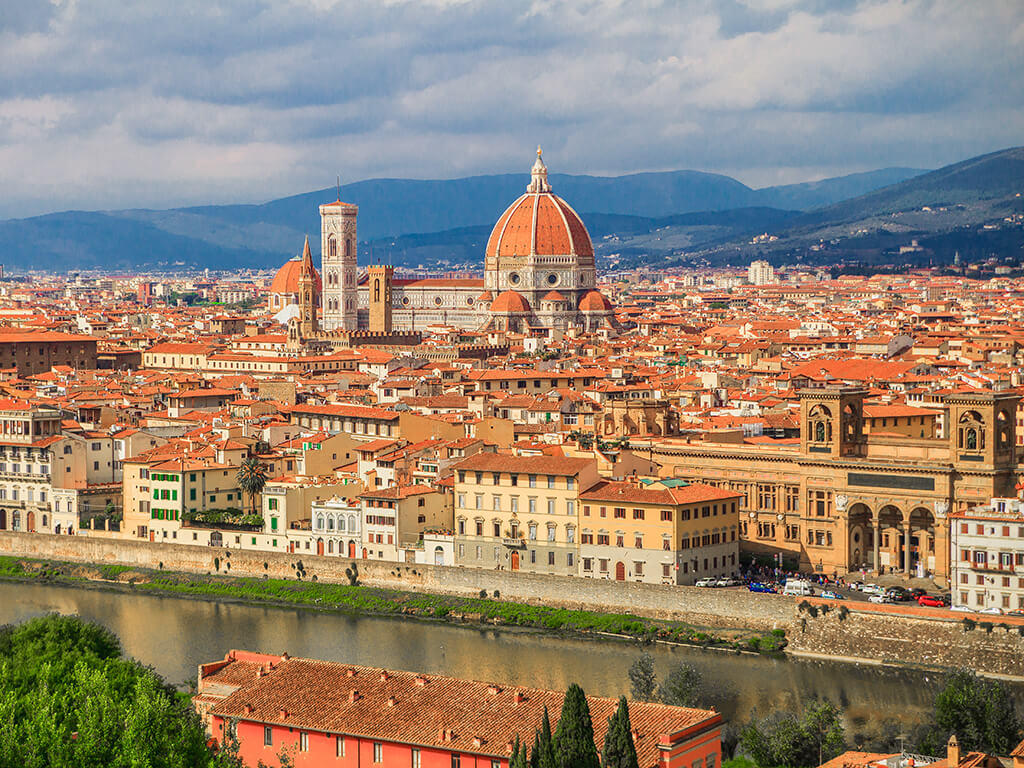The beautiful city of Florence houses countless masterpieces of Renaissance art and architecture at every turn. Florence was the cradle of the Renaissance and provided patronage to a myriad of the most influential and renowned artists of that period who left their mark on the city and on history. Only a 90-minute train ride from Rome, it makes for a perfect day trip.
Established by Julius Caesar, Florence originated as a Roman city. Its ascent to wealth and prosperity began when it was declared the capital of Tuscany in the 9th century and further ascertained when the rival city states of Pisa and Siena subjugated to Florence in the 13th century. It became the most important economic centre of Europe and attracted artists seeking patronage. The Medici family ruled Florence for more three centuries and were the most important patrons of the arts of the city, and to whom we are indebted for the incredible artistic heritage they left behind.
The top sights in Florence
It should come as no surprise that entire city of Florence was declared a UNESCO World Heritage Site in 1982. Every square, street, palazzo, cathedral, museum and even bridge over the Arno River is a stunning monument worth admiring.
Piazza della Signoria and Palazzo Vecchio
The landmark that best epitomises Florence is without a doubt Piazza della Signoria, considered by most as one of the most beautiful squares in the world. The striking Romanesque crenellated Palazzo Vecchio overlooks the 14th century square, which houses the town hall today. The square lies at the centre of Florentine life and it is the ideal starting point to journey into the city.
Palazzo Vecchio is an architectural and artistic masterpiece both inside and out. The clock tower, the battlements, the windows and the shield of the Republic of Florence make up a striking architectural complex. Adjacent to the Palazzo sits the wide-arched Loggia dei Lanzi, an open-air sculpture museum composed of the most fascinating Gothic and Renaissance elements.
Michelangelos’s David
Piazza della Signoria is already a beauty in its own right but that beauty is further accentuated by the statues positioned around the square. The replica of Michelangelo’s renowned David is one of such statues. The original statue was replaced by an exact marble replica in 1873 in order to protect it from damage. You can find the original David dating from 1500 in the Galleria dell’Academia, one of Florence’s most fascinating museums.
The statuary of the Piazza also includes the 1534 statues of Hercules and Cacus; the stunning 1563 Fountain of Neptune (the first fountain of Florence); and the statue of Cosimo I de’ Medici, Duke of Florence, who ruled between 1537 and 1569.
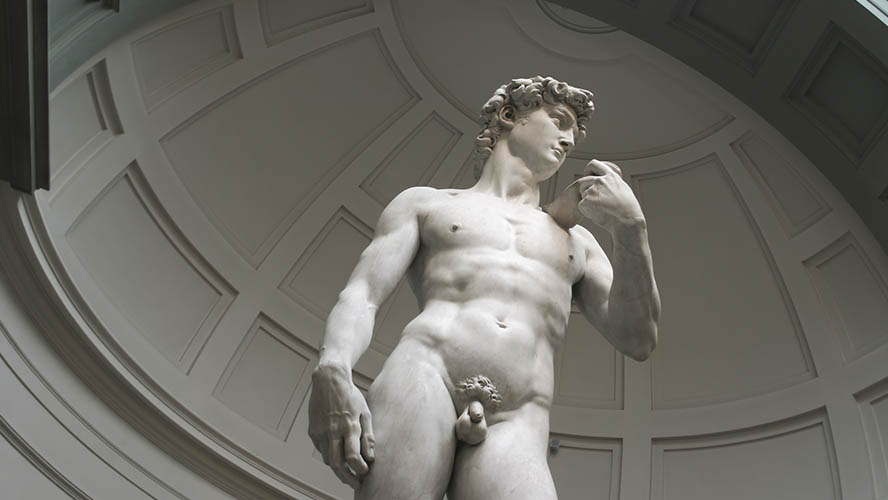
The Uffizi Gallery
Located adjacent to the Piazza della Signoria, the Uffizi Gallery boasts an impressive collection of ancient works of art by Leonardo, Botticelli, Rafael and Tiziano from the Medici’s private collection. The internal narrow courtyard provides incredible views of the Arno River. In fact, the Gallery is the most prominent and visited museum of Italy.
Florence’s Duomo
The dazzling Santa Maria dei Fiori, Florence’s Duomo, is a Renaissance masterpiece. The ravishing 19th-century neo-Gothic façade made of pink, white and green marble contrasts drastically with the surprisingly stark vast interior – 155 m long and 90 m wide. Filippo Brunelleschi’s octagonal cupula, measuring 45.5 m wide, proved to be architecturally ground-breaking in the 15th century. The mind-blowing, 463-step climb to the cathedral’s cupula reveals the incredible frescos adorning the internal dome.
The cathedral complex also includes the Baptistery, and its renowned Gates of Paradise, and Giotto’s Campanile.
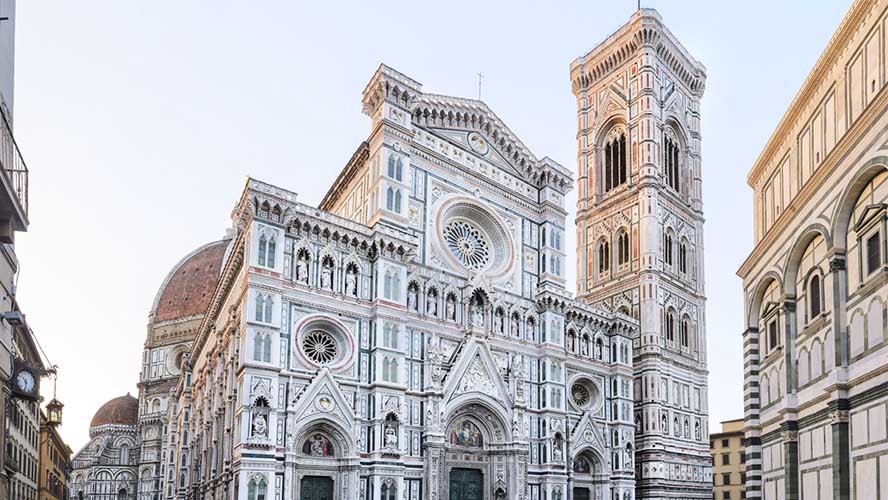
Basilica di Santa Maria Novella
The 13th– to 15th– century Basilica di Santa Maria Novella and its singular green-and-white marble façade is another Renaissance treasure.
Construction for the church began in 1246 and lasted 80 years. The interior is T-shaped and divided into three naves. It is an incredible treasure trove of artistic masterpieces; including Giotto’s 1290 Crucifi and Massaccio’s magnificient Trinitภone of the first artworks to techniques of perspective and proportion.
It also houses architectural gems such as the spectacular Chiostro Verde (the Green Cloister), which is decorated with Uccello’s superb frescos Creation and the Fall; the Spanish Chapel and its extraordinary frescos; and the Pharmacy, which is the oldest still-operating pharmacy in Europe.
Ponte Vecchio
The 14th-century Ponte Vecchio is another emblematic Florentine landmark. The medieval bridge spans the Arno River and is noted for having shops along it. The shops were built there as a way of escaping taxes. Today, it is dotted with jewellery shops, art dealers and souvenir shops.
The covered passageway, Vasari Corridor, runs above the shops and connects Palazzo Vecchio with Palazzo Pitto. Cosme de Medici had it built so he and his family could move freely between their palazzos.
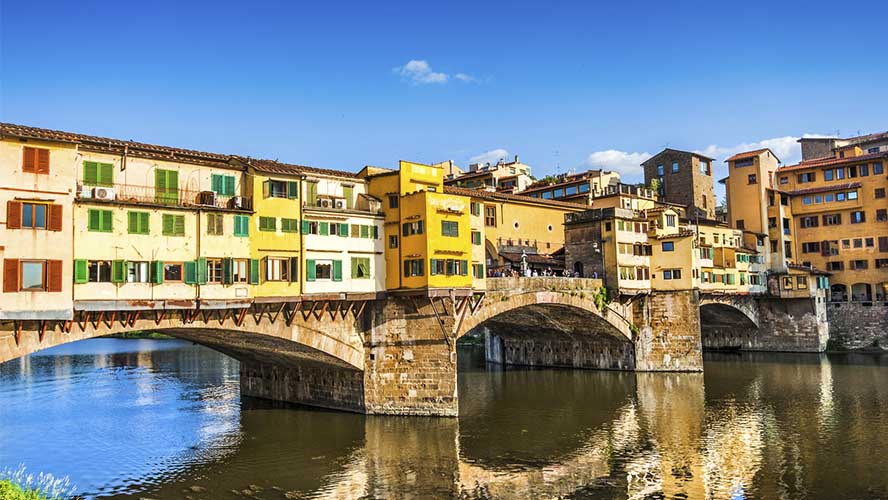
Palazzo Pitti
Located on the southern edge of the Arno River, the austere Palazzo Pitti presides over the namesake square. It was commissioned by the Pitti family during the 15th century but was acquired by the Medici family in the 16th century to serve as the main ducal residence. Napoléon later used the palazzo as a power base during the French occupation of Italy. It also served as the main royal palace for the House of Savoy when they ruled Italy. It was later donated to the state. Today, it houses the largest museum of Florence.
Galleria Palatina, the main gallery of the palazzo, contains exquisite work of arts from the Medici’s private collection. The Palazzo’s royal apartments are open to the public and are presented as they were when they were occupied by members of the House of Savoy. The Palazzo also contains a costume gallery and other museums, displaying an impressive collection of silver, jewellery, porcelain and carriages.
The lavish Boboli Gardens is located right behind the palazzo and is the main green space in Florence. The sculpture- and fountain-adorned garden also houses stunning grottos.
Piazzale Michelangelo – panoramic views of Florence
Take in the incredible cupula-dotted cityscape of Florence from Piazzale Michelangelo. The square affords sweeping views of the city at any time of day. There is no better viewpoint to fully appreciate the majestic beauty of this Renaissance gem.
Eating ou¡t in Florence
Florence offers a wonderful selection of restaurants and trattorias where patrons can savour the finest Tuscan cuisine, made from the freshest local products. Florence is truly a gastronome’s paradise. Here is a round-up of our top recommendations:
- Bottega Conviviale: An absolute must while in Florence, this cosy restaurant serves up delicious wood oven-baked pizzas and homemade pasta dishes.
- Osteria All’Antico Vinaio: Located near Uffizi Gallery, this eatery whips up the best schiacciata, Tuscan flatbread, in the city.
- La Prosciutteria Firenze: Head to this tiny spot for delectable boards of local charcuterie and cheese, and paired with luscious Italian wine. It is just a stone’s throw away from Uffizi Gallery.
- Trattoria La Casalinga: Authentic Tuscan cuisine prepared with products from nearby San Lorenzo market at very reasonable prices. It is located in the vicinity of Palazzo Pitti.
- Panini Toscani: This unpretentious eatery in the historic centre offers tantalising paninis made from a wide variety of cheeses, meats and vegetables. Be prepared for long queues at lunchtime.



































































